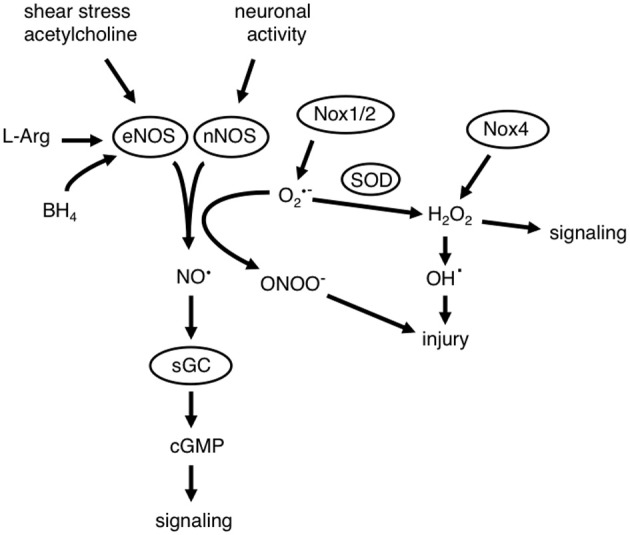Figure 1.

Interactions between nitric oxide (NO·) and reactive oxygen species (ROS). NO· is a critical component of mechanisms that regulate cerebrovascular homeostasis. Diverse stimuli (including shear stress, neurotransmitters like acetylcholine and activation of neurons) can result in the generation of NO· by either endothelial or neuronal nitric oxide synthase (eNOS and nNOS, respectively). The generation of NO· is dependent on the presence of the substrate L-arginine (L-Arg) and enzyme co-factors including tetrahydrobiopterin (BH4). NO· activates its receptor in vascular muscle soluble guanylate cyclase (sGC), which results in the formation of cyclic guanosine monophosphate (cGMP). This results in numerous signaling events and functional effects which include cerebral vasodilation. NADPH oxidases (Nox1 and Nox2) generate superoxide (O2·−) and Nox4 can generate hydrogen peroxide (H2O2), ROS can then participate in signaling events, but may also cause cellular injury. O2·− is a potent scavenger of NO·, which reduces the bioavailability of NO· and results in the formation of peroxynitrite (ONOO−), which also causes cellular injury. H2O2 can react with heavy metals to form the highly reactive and toxic hydroxyl radical (OH·).
